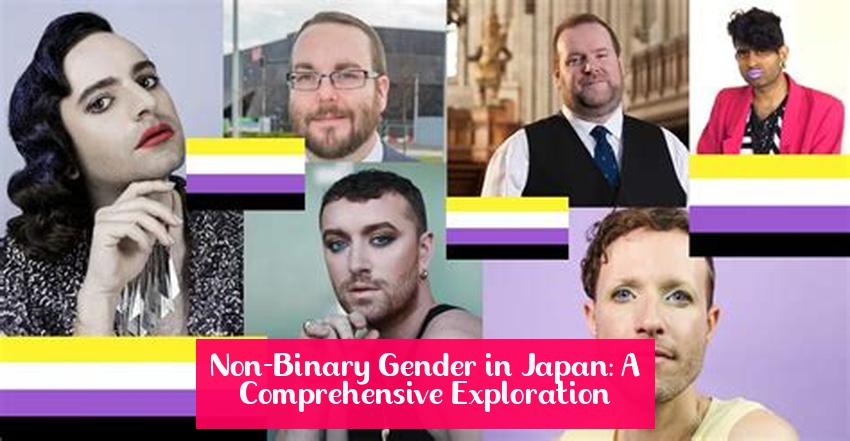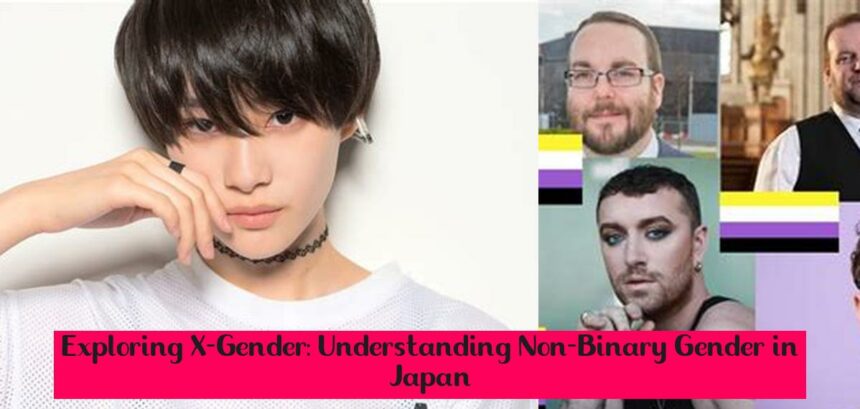Unlocking the colorful tapestry of Japan’s gender landscape, let’s embark on an enlightening journey to unravel the enigmatic world of non-binary gender in Japan. From the vibrant expression of X-Gender to the historical acceptance and contemporary challenges, this comprehensive exploration promises to be a fascinating and eye-opening adventure. So, buckle up as we delve into the captivating realm of non-binary gender in Japan and uncover the stories, struggles, and triumphs of this diverse community.
Key Takeaways
- X-Gender in Japan is the equivalent of non-binary gender identity and is often represented by the non-binary flag.
- Japan’s view on gender identity and sexuality is conceptualized through a spectrum, allowing for varied expressions of gender and sexuality.
- Non-binary individuals in Japan can use the pronoun “Jibun” if they do not relate to a specific gender, while those who relate to a specific gender can use the corresponding pronoun.
- The wakashu, historically, are sometimes referred to as traditional Japan’s third gender, indicating a historical acceptance of non-binary identities.
- X-Gender, also known as Xジェンダー (x-jendā) in Japanese, is a common transgender identity in Japan that does not fit within the binary categories of male or female.
- Japan’s national government does not currently recognize same-sex unions and lacks laws protecting individuals from discrimination based on sexual orientation.
Non-Binary Gender in Japan: A Comprehensive Exploration

Japan, a country renowned for its rich cultural heritage and vibrant traditions, holds a unique perspective on gender identity and expression. While the concept of gender binary remains prevalent, there exists a growing recognition and understanding of non-binary gender identities, offering a more inclusive and diverse landscape for individuals to express their true selves. In this comprehensive exploration, we delve into the intricacies of non-binary gender in Japan, examining its historical roots, societal attitudes, legal recognition, and the challenges and opportunities that lie ahead.
A Glimpse into Japan’s Gender Spectrum
In Japan, gender identity and sexuality are conceptualized through a spectrum, allowing for a multitude of expressions and experiences. This nuanced understanding challenges the traditional binary view of gender, recognizing the fluidity and diversity that exist within the human experience. This spectrum encompasses a wide range of gender identities, including non-binary, genderqueer, and gender non-conforming individuals, who may identify outside the conventional categories of male and female.
Don’t Miss – Are Stray Cats Homeless? Understanding Their Plight and How to Help
X-Gender: A Japanese Expression of Non-Binary Identity
X-Gender, also known as Xジェンダー (x-jendā) in Japanese, is a widely recognized transgender identity in Japan that defies the binary classification of male or female. This term emerged in the late 1990s and gained popularity through queer organizations in Kansai, particularly in Osaka and Kyoto. X-Gender serves as an umbrella term, similar to non-binary and genderqueer, encompassing a diverse spectrum of gender identities that fall outside the traditional binary.
Historical Acceptance of Non-Binary Identities
Japan’s history reveals instances of non-binary gender recognition, particularly in the context of the wakashu, a term used to describe young, unmarried men who were celebrated for their beauty and served as companions to wealthy and powerful individuals. These individuals, often depicted in literature and art, occupied a liminal space between male and female, embodying a fluidity of gender expression. While the wakashu were biologically male, their social roles and cultural significance transcended the binary categories, hinting at a historical acceptance of non-binary identities.
Discover: Unveiling the Enigmatic Wakashu: Exploring Japan’s Third Gender in Edo Period and Beyond
Challenges and Opportunities in Legal Recognition
Despite the growing awareness and acceptance of non-binary gender identities in Japan, legal recognition remains a significant challenge. The country’s national government does not currently recognize same-sex unions, and there is a lack of laws protecting individuals from discrimination based on sexual orientation or gender identity. This absence of legal recognition creates obstacles for non-binary individuals in various aspects of life, including marriage, family formation, and access to healthcare and employment.
However, there have been promising developments in recent years. In 2020, the city of Yokosuka became the first municipality in Japan to recognize the relationships of people of all genders, including non-binary individuals. This progressive move signals a growing momentum towards legal recognition and equality for non-binary people in Japan.
Empowering Non-Binary Voices: Storytelling and Community
The experiences of non-binary individuals in Japan are as diverse as the identities they embody. Storytelling and community-building play a crucial role in amplifying their voices, fostering a sense of belonging and solidarity. By sharing their narratives, non-binary individuals can challenge societal stereotypes, raise awareness, and inspire others to embrace their authentic selves.
Non-binary communities in Japan are gaining visibility and providing a supportive network for individuals to connect, share experiences, and advocate for their rights. These communities offer a safe space for non-binary people to explore their identities, find acceptance, and work towards creating a more inclusive and equitable society.
Conclusion: A Journey Towards Inclusion and Recognition
Discover: P.O: Unveiling the Youngest Member of Block B’s Journey in K-pop and Beyond
The exploration of non-binary gender in Japan reveals a complex tapestry of history, culture, and societal attitudes. While there are challenges in terms of legal recognition and societal acceptance, there is also a growing movement towards inclusivity and understanding. The recognition of X-Gender as a legitimate gender identity, the historical examples of non-binary acceptance, and the emergence of non-binary communities all point to a promising future for non-binary individuals in Japan.
As Japan continues its journey towards a more inclusive society, it is essential to amplify the voices of non-binary individuals, challenge discriminatory practices, and advocate for legal recognition and protection. By fostering a climate of acceptance and understanding, Japan can create a society where everyone, regardless of their gender identity, can live authentically and thrive.
Can you be nonbinary in Japan?
Answer: Yes, X-Gender is the Japanese equivalent of Non-Binary gender identity, and it is often represented by the non-binary flag in support. Non-binary is an umbrella term that serves a similar function in Japan.
What is Japan’s view on gender identity?
Answer: In Japan, gender and sexuality are conceptualized through a spectrum, emphasizing varied expressions of gender and sexuality, as evidenced by Japan’s gender-bending communities.
How do you address a non-binary in Japanese?
Answer: If you relate to a specific gender, you can use the corresponding pronoun. Those who do not relate to a specific gender can use the pronoun “Jibun.” Alternatively, you can refer to others by their name if you are close with them.
What is the historical acceptance of non-binary identities in Japan?
Answer: The wakashu, historically, are sometimes referred to as traditional Japan’s third gender, indicating a historical acceptance of non-binary identities.
What is X-Gender in Japan?
Answer: X-Gender, also known as Xジェンダー (x-jendā) in Japanese, is a common transgender identity in Japan that does not fit within the binary categories of male or female. It is a third-gender concept that differs from M, for male, or F, for female.







